I have no idea how Vietnam came to my mind, but it did come to my mind during the summer of 2017. I asked Sneza if she would like us to go there in January and she immediately said yes. And there, we had the deal. Then in one of the cafés close to my home I ran into Marina, a friend from some physical exercises we had both stopped going to a couple of years earlier, we were really glad to see each other again, exchanged our phone numbers and soon we met for a coffee. Then it turned out that Marina had actually been in Vietnam a few months earlier (just a pure coincidence, ha?), so we started talking along these lines and it was in fact she who gave me an idea to “make a stop” in Hong Kong before going to Vietnam. Afterwards I asked Sneza what she thought about it, justifying the proposal, and she agreed. That’s how we decided on the basic route of the journey – we fly from Belgrade to Hong Kong, spend a few days there, then fly to Hanoi, travel around the country for a few weeks and then return back home from Ho Chi Minh City, formerly known as Saigon. And all of this within a month.
Approximate route of the journey around Vietnam (including Hong Kong and Macao)
As for Hong Kong, many, many years ago, when I was a little girl, a family’s album containing some banknotes came to me. I have no idea who collected that and perhaps it was the beginning of the interest in amateur numismatics my father developed later. Be as it may, that collection had already had a banknote from Hong Kong. For me, it was the most beautiful banknote I had ever seen. As a child, I enjoyed watching it. And so the time passed and in summer 2017 it occurred to me to go to Hong Kong and I remembered that banknote. At the time when it was issued, Hong Kong was a British colony, i.e., a territory which the British rented from the Chinese with a provision to return it after 99 years. As the end of the rental period was coming to its end there was a general hysteria as to what to do about it, but in 1997 Hong Kong was successfully returned to China, although with certain specificities. Today it is a Special Administrative Region of the People’s Republic of China and an autonomous territory.
We started with our journey at the very beginning of 2018. Although we slept little during the flights (we had a change of planes), we agreed not to sleep at all during the day, but rather to try to walk during the day and go to bed very early in order to overcome the jetlag and get into the Hong Kong time zone (7 hours difference in relation to Belgrade). This was my old and proven “recipe” in the cases when I’m flying eastwards and I have to say that it worked out well this time, too. But, to start with, while we dragged ourselves with quite hazy heads, we headed for the port. We wanted to see where the boats we were planning on using in the following days leave from. The day was perfect – not too hot and not too cold, a few clouds, but not too much. Our hotel was at a very good location so we soon reached the shore and there we walked along the spacious quay.
Already on our way from the airport to the centre, it was quite clear that Hong Kong was a modern, urban beehive. As well as a very well-off beehive and that may clearly be seen by the large number of modern buildings that are located along the walking area we strolled along on our way to the port.
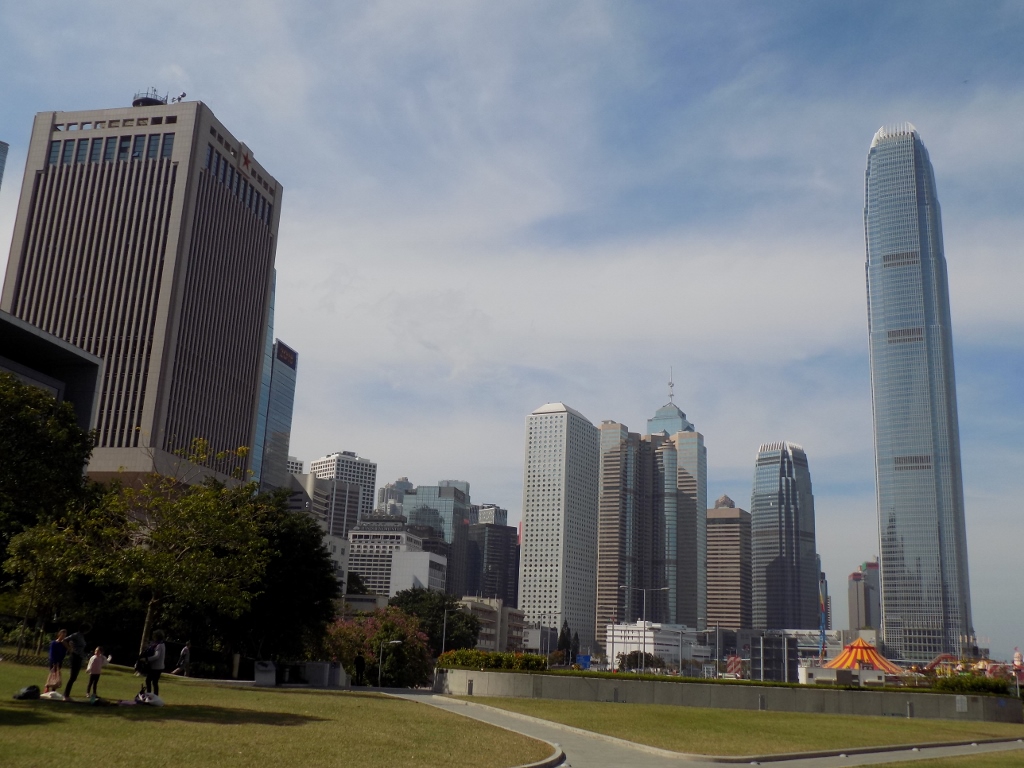 First sights from Hong Kong
First sights from Hong Kong
The walking area stretches beside a strait and let me now clarify the geography a little. The autonomous territory of Hong Kong consists of a large number of islands and a continental section. The main, central island is also called Hong Kong and our hotel was there. On the shore, opposite the centre, there is the peninsula of Kowloon. It belongs to Hong Kong – the region. Along with it, there are also the New Territories, which in addition to the continental part also comprise numerous islands.
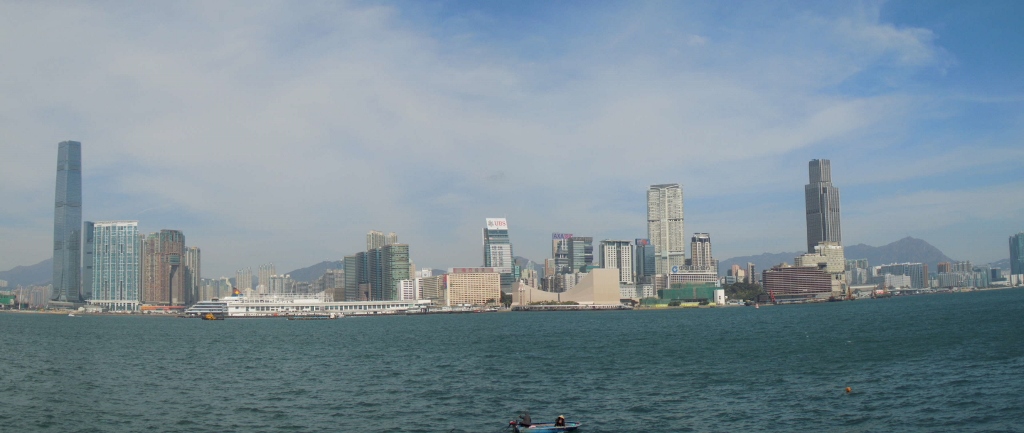 View at Kowloon
View at Kowloon
After a brief visit to the port, we headed towards the main streets of the island of Hong Kong. As the region, Hong Kong is one of the economically most developed in the world and it is a very important financial centre. In other words, there is a lot of money here. And this may be seen quite easily when walking around the centre.
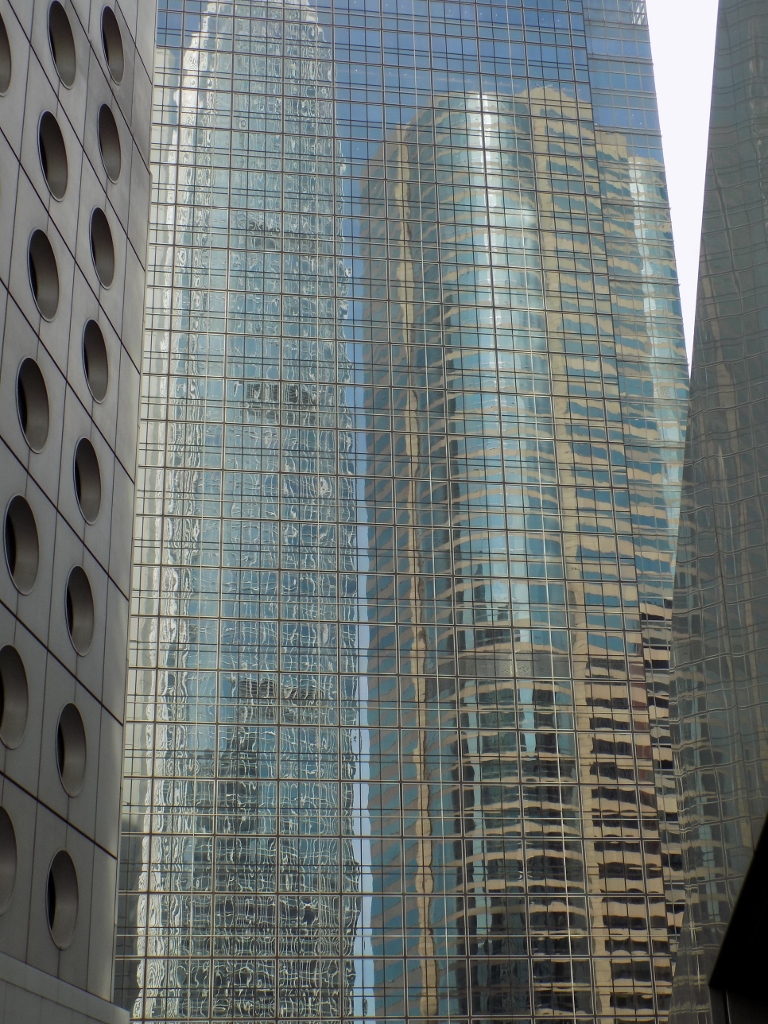 Buildings in Hong Kong
Buildings in Hong Kong
There are, of course, the tall buildings, but there also streets filled with traffic, as well as numerous footbridges for pedestrians leading over these streets in order for the pedestrians not to slow down the traffic of vehicles.
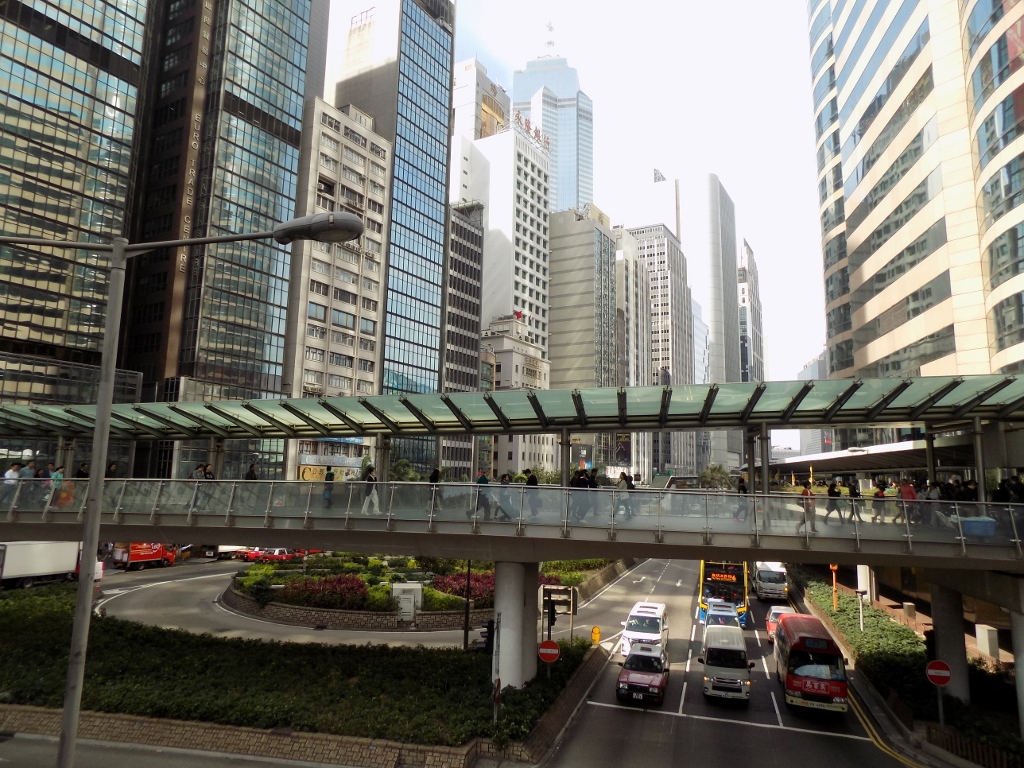 One of the numerous footbridges in Hong Kong
One of the numerous footbridges in Hong Kong
We went slowly to the special escalators that constitute a proper tourist attraction. This may sound odd, but not in Hong Kong. The escalators here constitute a unique type of public transportation. Namely, in the background of the central section of Hong Kong there is a very steep elevation and up to a certain height there are buildings arranged on its slopes. Since it is very strenuous for people to climb regularly such a steep terrain (which they certainly used to do in the past), a whole series of escalators has been constructed which facilitate the people when going to work or returning home. This is the Central–Mid-Levels escalator and walkway system and this is the longest outdoor covered escalator system in the world. It is 800 m long and it covers the vertical climb of 135 metres. In the morning, from 6 to 10, the escalators move downwards and from 10 am to midnight they go upwards. Parallel to them there are steps that are used by those going in the direction opposite to that of the escalators. The system consists of 18 escalators and 3 inclined moving walkways.
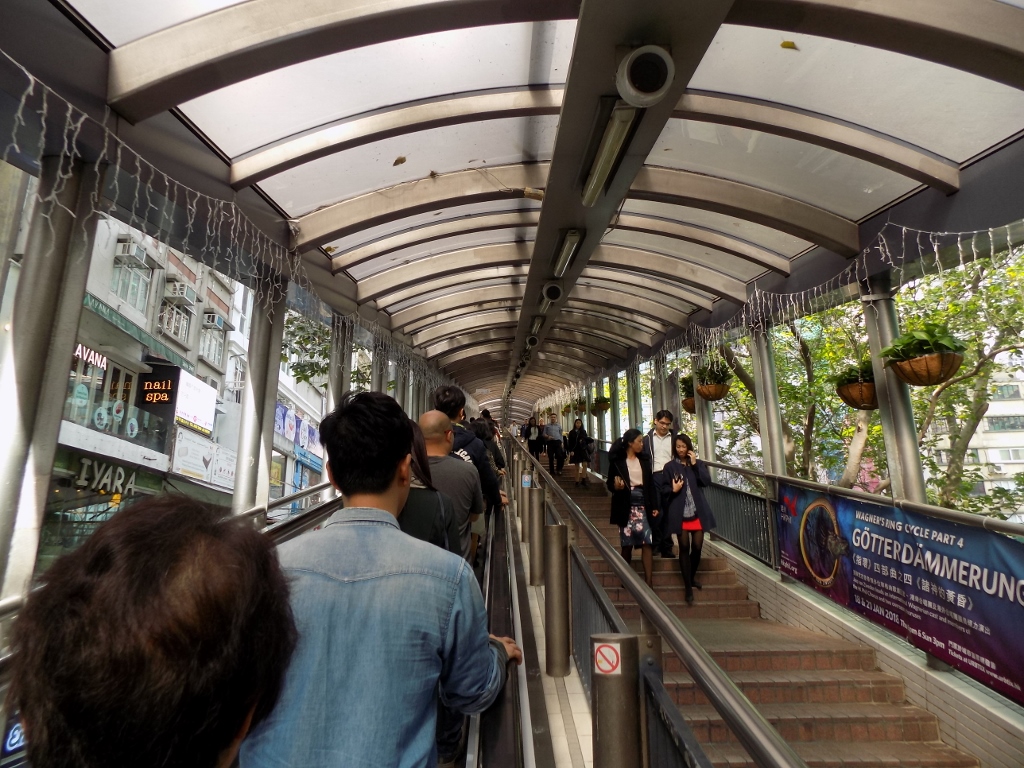 The escalator system as a form of public transportation in Hong Kong
The escalator system as a form of public transportation in Hong Kong
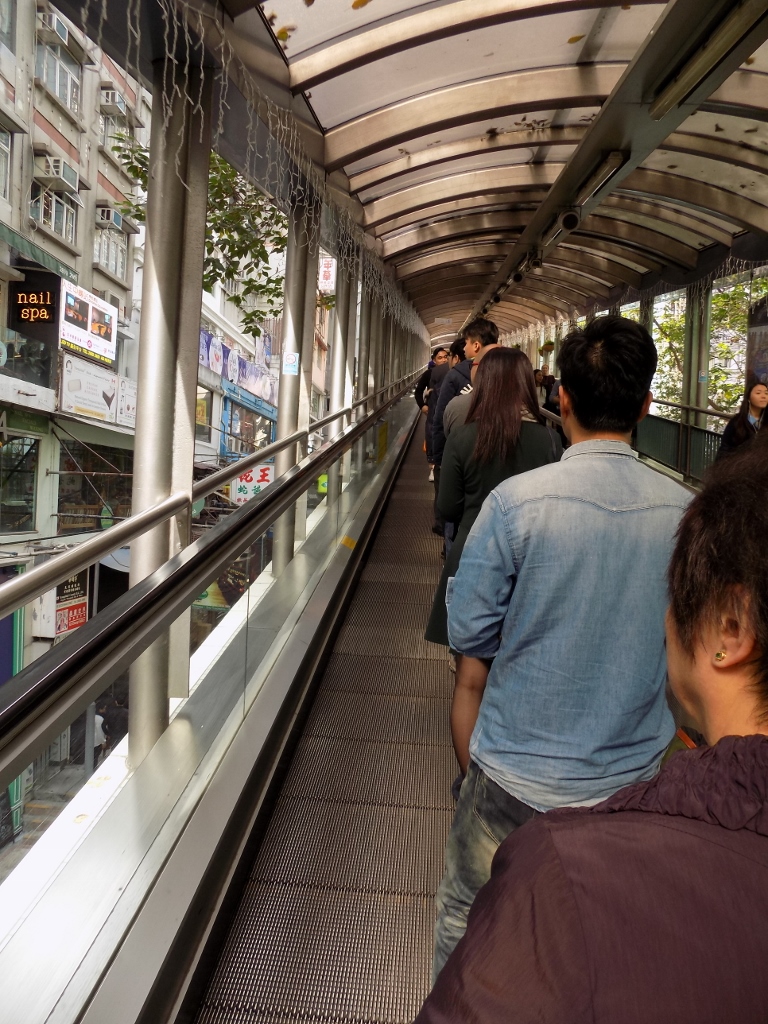 An inclined moving walkway
An inclined moving walkway
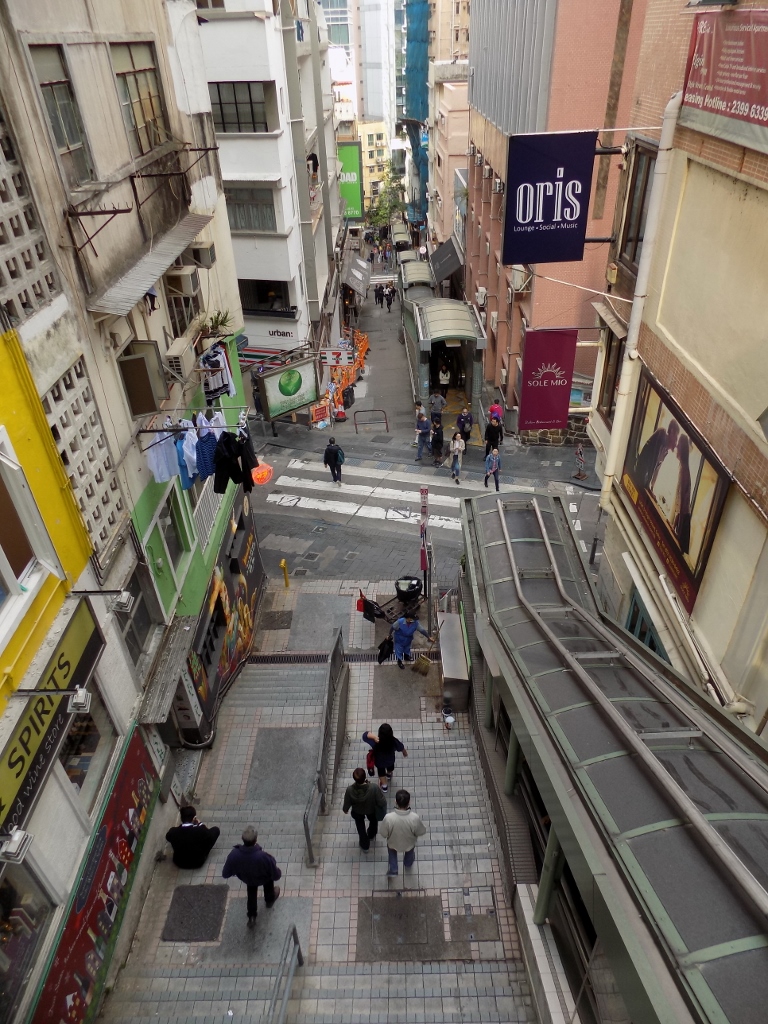 An unusual public transportation system in Hong Kong
An unusual public transportation system in Hong Kong
Certainly, this system was not made for a couple of houses on a hill with a few people living in them. Hong Kong has one of the highest population densities in the world, so this system has been envisaged for an easy movement of a large number of people living in this part of the city. While going along the route we passed a residential high-rise building. I was fascinated by the tidily arranged outdoor AC units, but, in addition, the photo also suggests the number of residents that may fit onto a small land area.
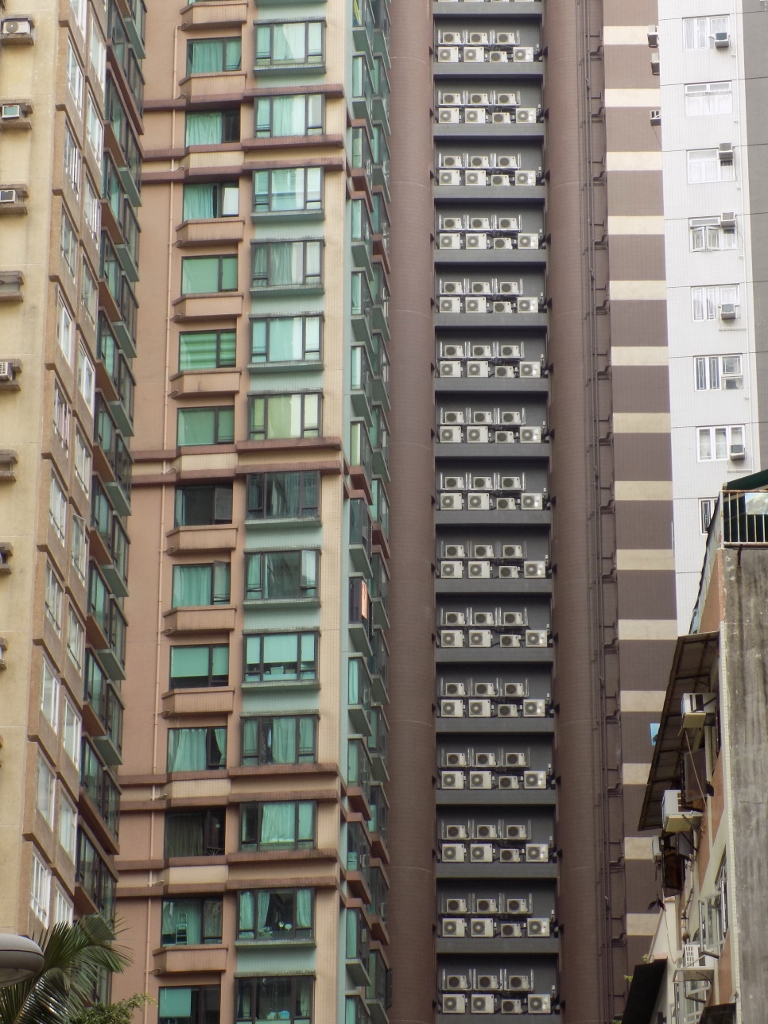 One of the buildings passed by the escalator system
One of the buildings passed by the escalator system
We interrupted our ride on the escalators at some point, for we felt we had to stop somewhere for a coffee and have some rest, since we were getting very tired. Still, after a short break, we continued along the escalators going upwards. For our state of being at the time, this was the perfect choice.
When we reached the end of the escalator system, we saw a sign pointing towards our next destination and that was a funicular leading to Victoria Peak or simply the Peak Tram as the funicular is called. When we got to the place from where the funicular leaves, we were shocked by the crowd. Still, we decided to wait and we indeed waited for almost one hour and a half. It was not easy for us, but we eventually managed to get on the tram while there was still some daylight.
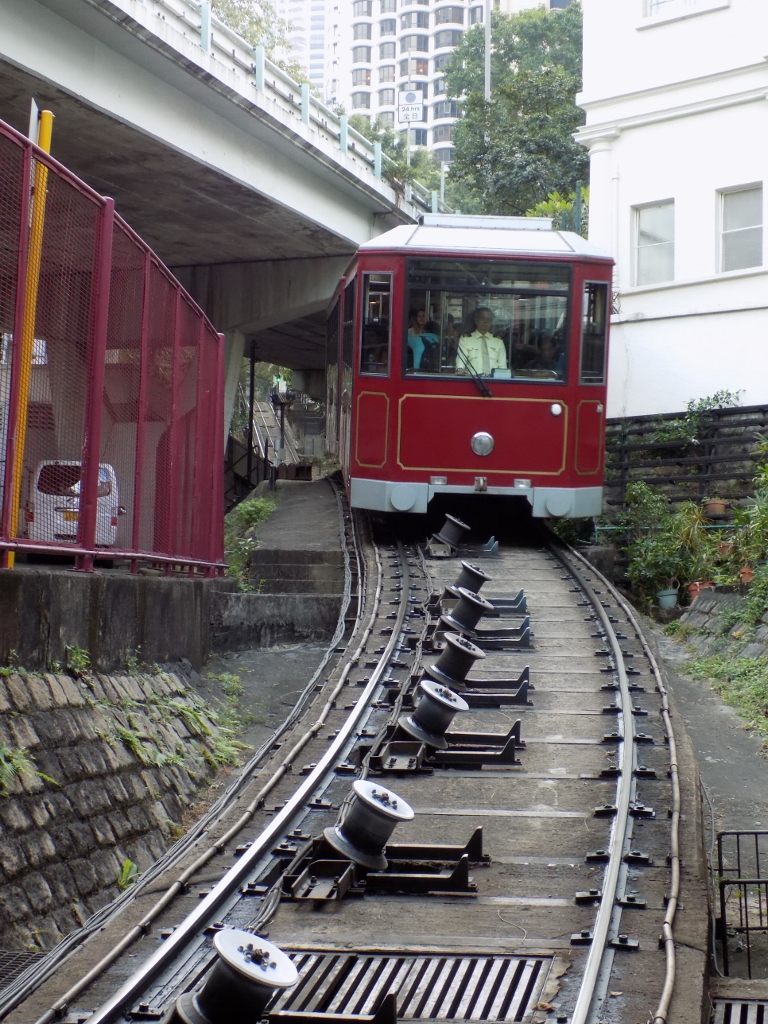 The Peak Tram coming to fetch us
The Peak Tram coming to fetch us
The ride on the two joined large wagons took only some 5 minutes. Once you leave the funicular, you enter directly into the realm of commercialism – souvenirs, bric-a-brac, some more souvenirs, lots of different colours, neon lights, as well as escalators (you can do good business here if you are an escalator manufacturer), since 5 to 6 levels above the main arrival stop of the funicular there is a terrace with a panoramic view and from there, there is indeed a beautiful view at Hong Kong. One of the ideas when we planned coming to this precise spot was to do it in the late afternoon on account of the relative position of the Sun. Since we spent a lot of time just waiting to get to the peak, we actually managed quite so.
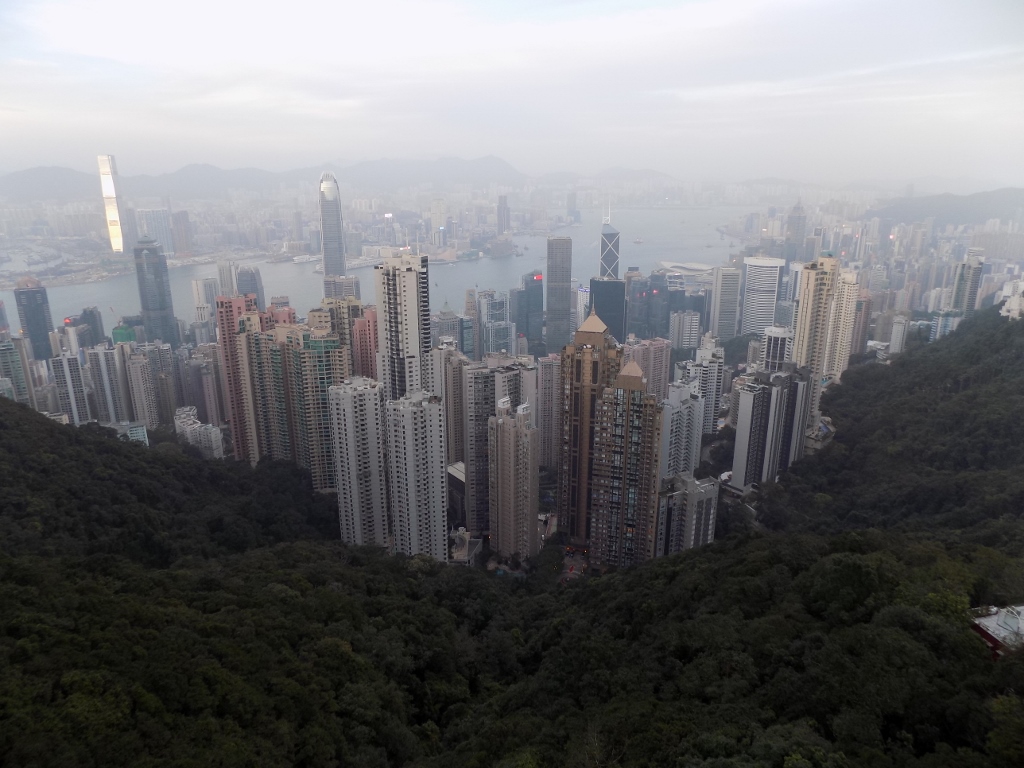 Panoramic view at Hong Kong
Panoramic view at Hong Kong
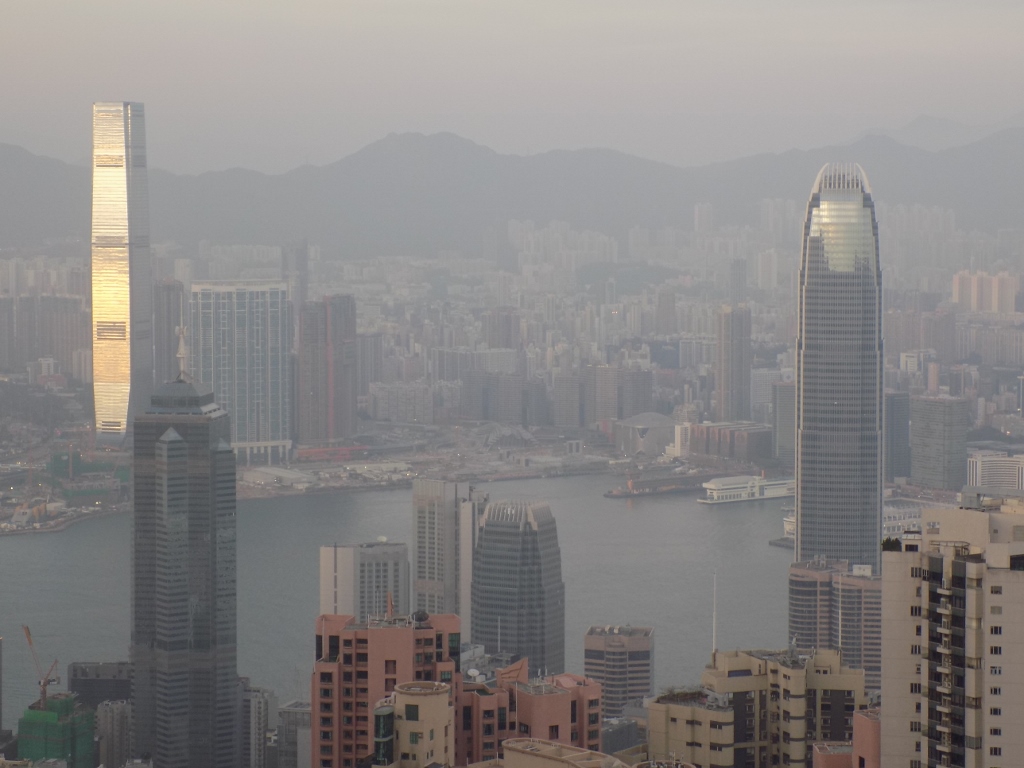 A detail of the panoramic view at Hong Kong, the sun is slowly setting
A detail of the panoramic view at Hong Kong, the sun is slowly setting
Moreover, we also had a “bonus,” since the night was quite close and we knew that the lights on the Hong Kong skyscrapers would come on. And so they did.
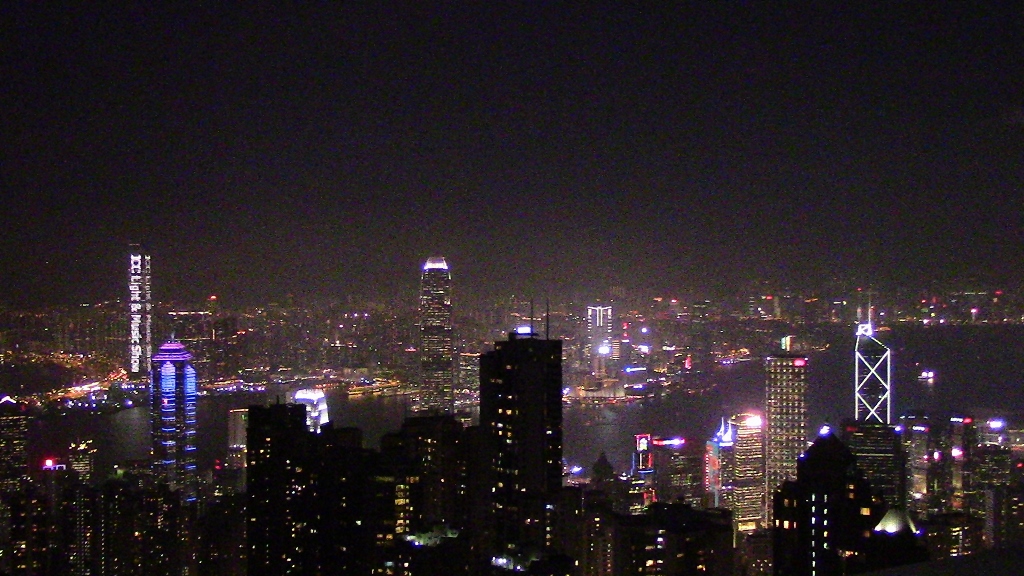 Panoramic view at Hong Kong at night
Panoramic view at Hong Kong at night
And by the way, this is one of the most familiar sights in Hong Kong – precisely this view from Victoria Peak at the skyscrapers adorning the centre of the city. It is interesting that Hong Kong is the city with most high-rise buildings in the world. It has more of them even than New York!
On our way back to the hotel, with an intention to go to bed early, we had a nice walk, but we also needed to eat something. Although we were very tired, we did enjoy a bowl of wonton soup.
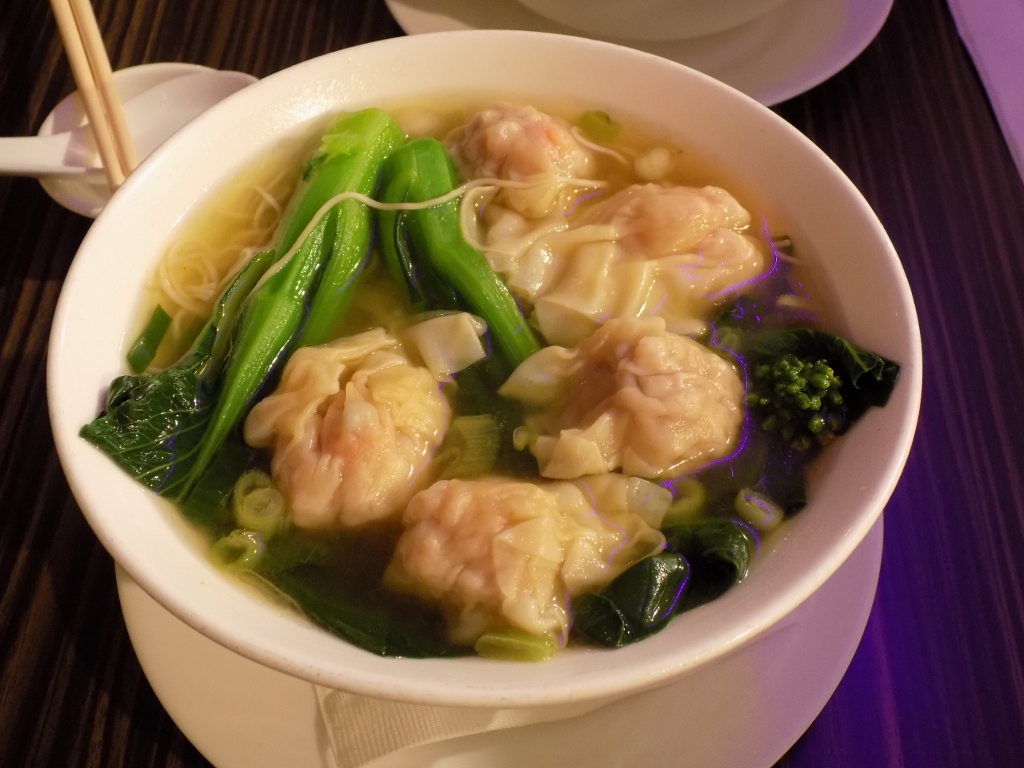 Wonton soup
Wonton soup
During the night, probably owing to major tiredness (little sleep and a lot of sightseeing), and because of the abrupt and large drop in my bodily temperature caused by the strong cold wind that blew on Victoria Peak, I slept poorly and kept waking up feeling cold. Even my warm pyjamas and 10-hour sleep did not help much and I woke up with a sensation as if I would get a cold. Well, I really did not need that.
In not too great a mood, together with Sneza I headed to the Hennessy Road, since we were catching an eastbound tram. What is important about trams on the Hennessy Road is that they go either in the east or in the west directions. But, what is particularly interesting about them is that these are the only double-decker trams in the world. The two of us let one tram pass, since it was more crowded, but we hopped onto the next one, went up, took our seats and enjoyed the view!
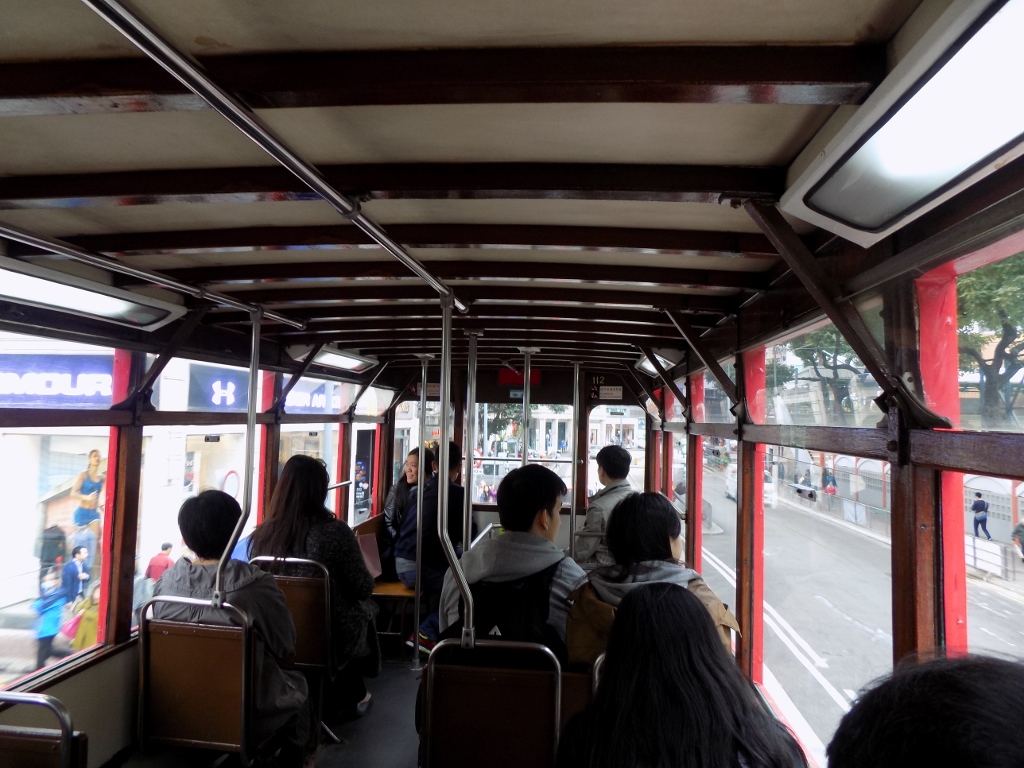 On the upper deck of a tram
On the upper deck of a tram
We went to the part of the city in which the escalator system visited the previous day was located and there we looked for a tea house that was recommended to us. Along the way, we certainly watched the city and its details. As I’ve said, Hong Kong is a very wealthy city, full of modern high-rises and dazzling windows of expensive shops and malls, but it is not all like that. In a large number of side streets there are seemingly improvised open markets. Some sell fruits and vegetables, some seals and figurines made of semi-precious stones, and some sell toys, souvenirs, plastic watches and what not.
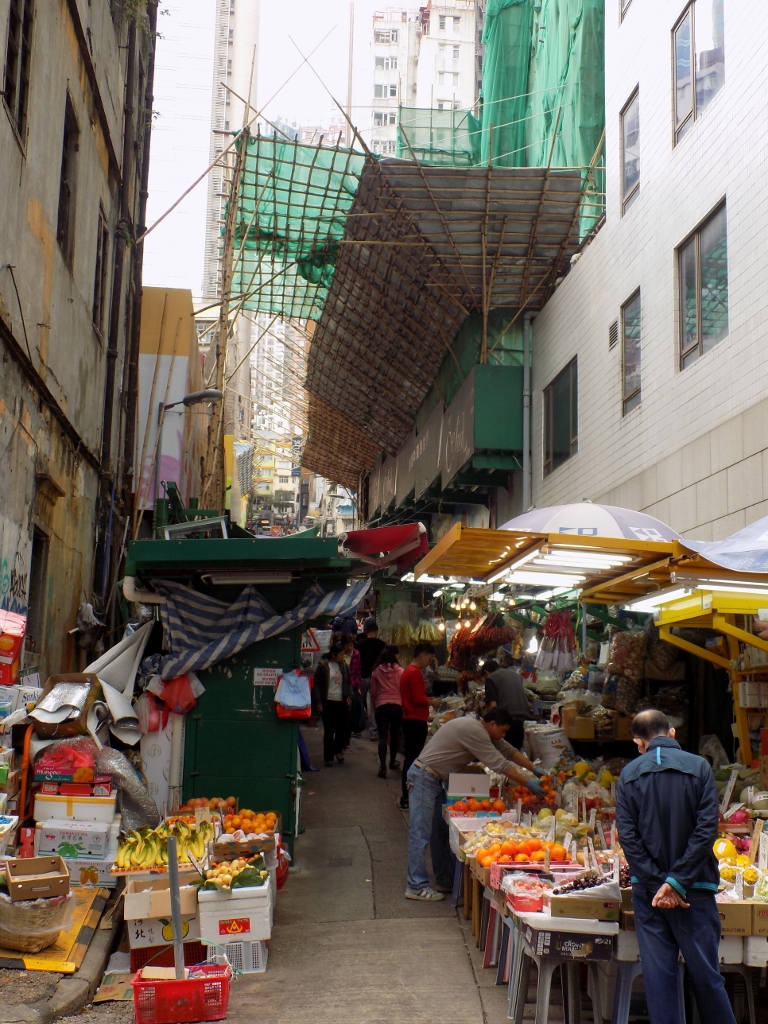 One of the Hong Kong’s side streets. All the scaffolding we saw here was made of bamboo!
One of the Hong Kong’s side streets. All the scaffolding we saw here was made of bamboo!
We soon found the place we were looking for and although it appeared to be a restaurant, it is actually a tea house which serves food and not just any food but dim sum, which is the name of one of the traditional styles of preparing and serving food in the Chinese cuisine. This was the Lin Heung Tea House.
It was very crowded inside, we barely managed to find free seats, and we actually shared the table with a family and a couple of other guests. The clients were mostly local people. Everything was in Chinese, but as it turned out, this was not a problem at all. As soon as we sat down, a waiter came and asked us which tea we would like. Since we did not understand much, we opted for a simple solution and that was jasmine tea. Then he brought chopsticks, a teapot and tea cups, as well as a piece of paper with a printed table with different fields. Then we observed what other people were doing and we did the same.
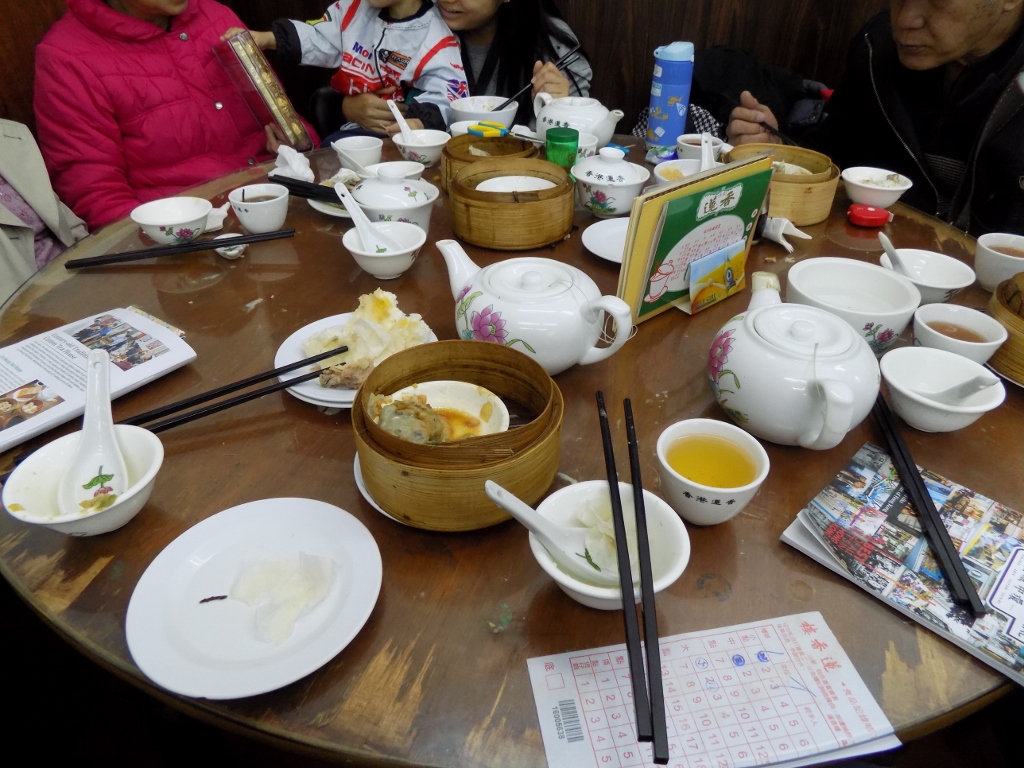 Table at the tea house at which we were sitting; under the glass in the front there is our piece of paper for marking the dishes that were taken
Table at the tea house at which we were sitting; under the glass in the front there is our piece of paper for marking the dishes that were taken
As for the food, there were no problems there at all. In order to get the food, one needs to take the piece of paper and go to one of the women that bring different dishes on food carts. Bamboo steamers with the same type of dish are stacked one on top of the other and each food cart is used for several dishes. You see what is being offered, then you show to the woman which dish you want, she puts it on a plate, hands it over to you and stamps the relevant field on your piece of paper, and then you go back to your seat and eat what you have just taken.
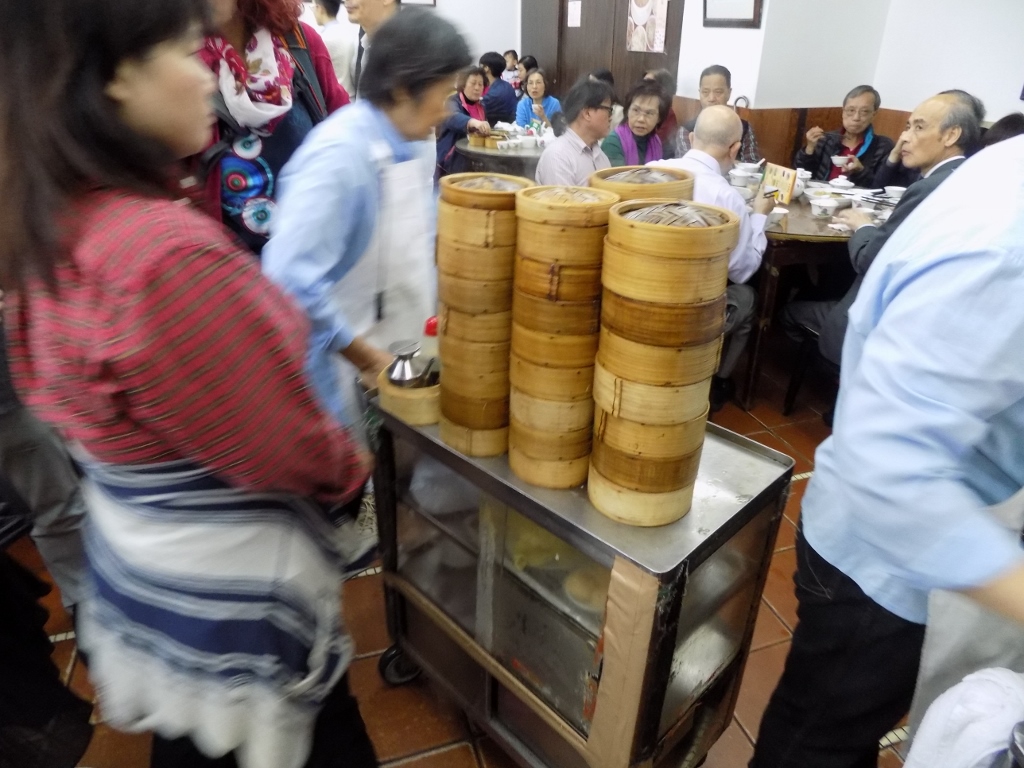 A woman with a food cart
A woman with a food cart
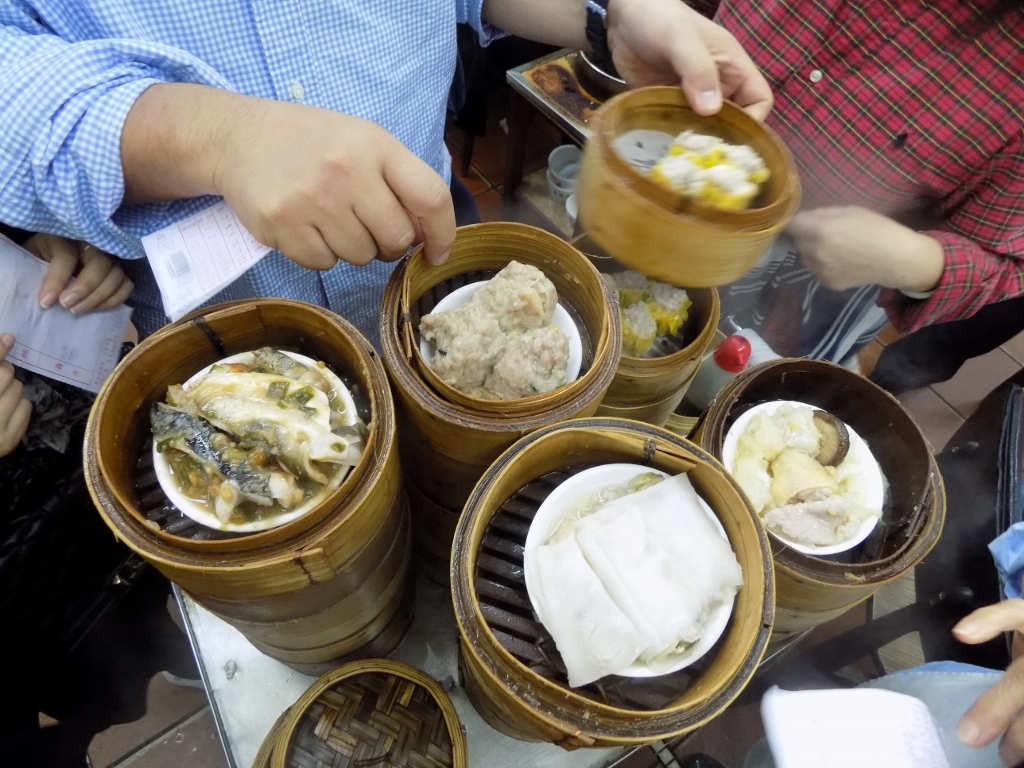 Food on the cart
Food on the cart
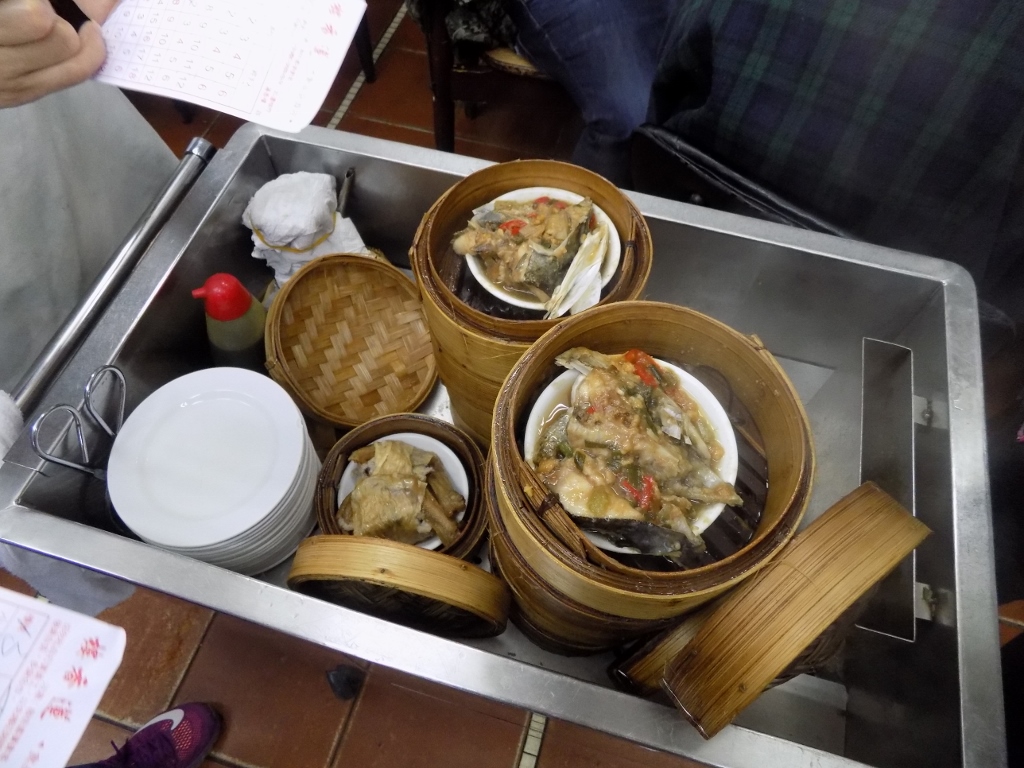 Food on the cart – pay attention to the chicken legs. They adore them here!
Food on the cart – pay attention to the chicken legs. They adore them here!
If the photos were not sufficient, here is a video clip:
Still, it is not enough to go to the food cart just once, it is too little food and it is a pity not to try different dishes, so I kept going there a few times, peering into the dish bowls and choosing what caught my eye. And I was quite successful. Except for one dish which was “just” ok, all others were fantastic. But what we actually ate – I have no idea!
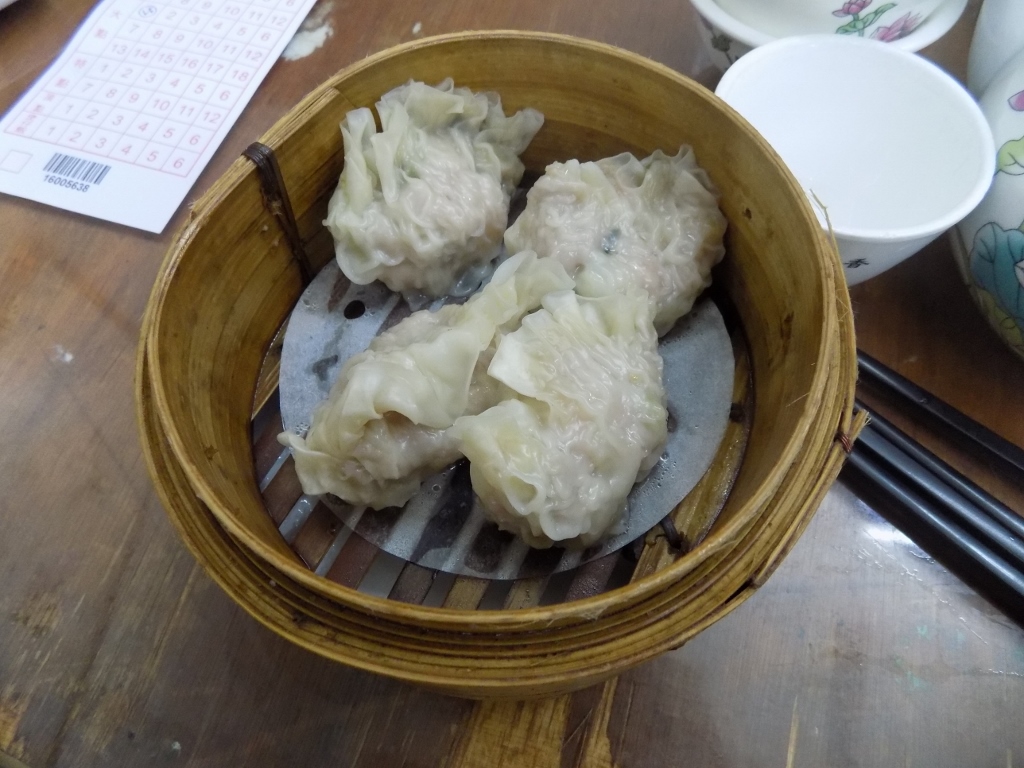 Fantastic food at a fantastic place
Fantastic food at a fantastic place
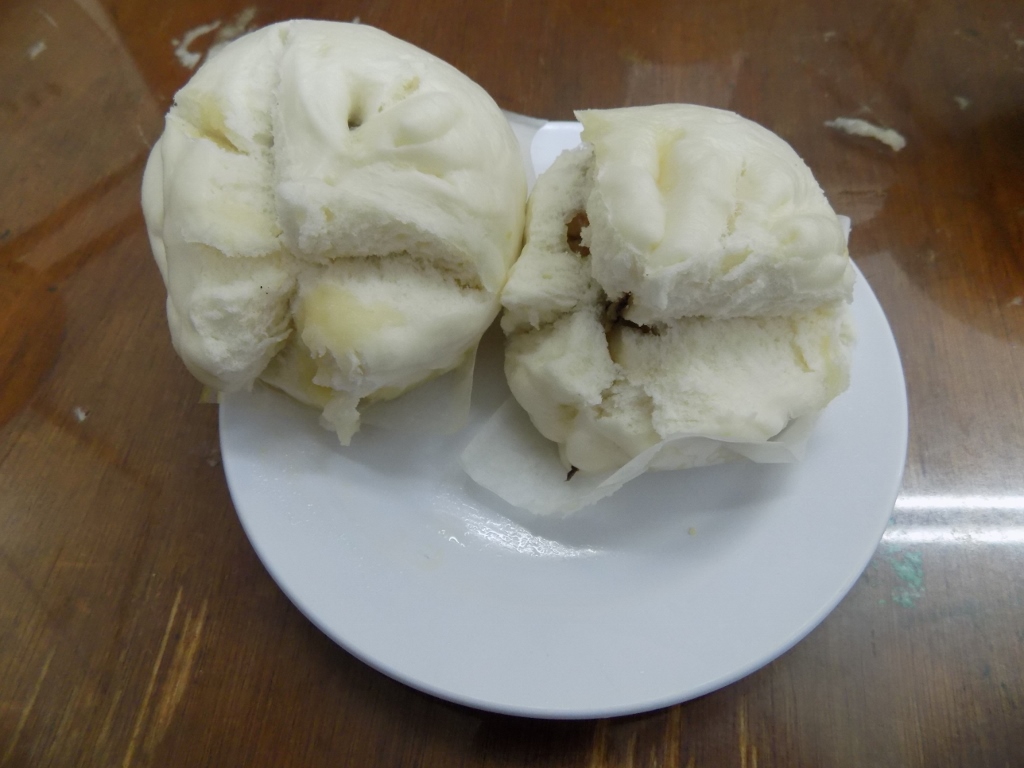 Fantastic food at a fantastic place
Fantastic food at a fantastic place